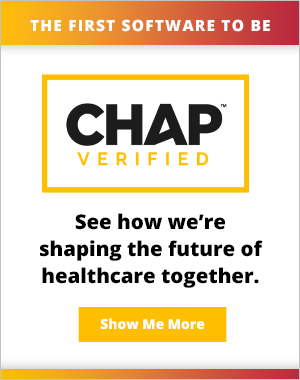
The Medicare Cost Report (MCR) is a detailed financial document that healthcare providers participating in the Medicare program are required to submit annually to the Centers for Medicare and Medicaid Services (CMS). It provides insight into the utilization of home health services along with provider costs and reimbursement related to the delivery of care to Medicare beneficiaries. The MCR is required to be completed by Medicare providers to ensure compliance with CMS Medicare regulations.
Axxess recently held a webinar discussing keys to ensuring accurate Medicare Cost Reports and why this accuracy is crucial for systemic change to the methodology and interpretation of MCRs. The discussion was moderated by Axxess Senior Vice President of Public Policy Deborah Hoyt with panelists Steve Landers, MD, MPH, Chief Executive Officer of the National Alliance for Care at Home; Mark Sharp, CPA, Partner – Home Care & Hospice of Forvis Mazars; and Jennifer F. Sheets, RN, MSN, MBA, Acute and Post-Acute Healthcare Strategy Executive Board Member for the National Alliance for Care at Home and Board Chair for the Research Institute for Home Care.
To read part one of our two-part blog series on this webinar, click here. This installment focuses on key insights from Landers and Sharp, which emphasize the importance of modernizing cost reports and ensuring accurate data for meaningful policy and reimbursement reform. Here’s what home health providers can do to improve their cost reporting and advocate for better policies.
The Problem With Current Cost Reporting
Sharp and Landers highlighted two main problems with cost reporting today:
-
Flawed Interpretation and Methodology: The MCR considers traditional Medicare only, so costs associated with other payers are not reflected in CMS’ aggregated profit margins for the home health sector.
“Between Medicaid, charity care, Medicare Advantage, other managed care products [and] other community services that our agencies are paying, the blended margin of agencies is far less than what is being reported by MedPAC and by CMS,” said Landers. “It’s critically important that we make progress there.”
-
Inaccurate Data: Many home health organizations are not reporting data in their MCRs with complete accuracy.
“What MedPAC reports, and CMS, is pretty much in line with what our data analysis says on the cost reports: close to 20% margins on … the Medicare program,” said Sharp. “That’s very different than the actual business net income or profit margin that the business [is] incurring. So, what’s the disconnect?”
Sharp believes the primary disconnect between reported and actual home health margins is inaccuracy in submitted MCRs.
“Probably the number one disconnect is the fact that information is not going in accurately and we’re taking shortcuts,” said Sharp. “We all know that there are certain costs that Medicare [says] are unallowable. I would contend probably the biggest inaccuracy in the cost reports today [is] the fact that we probably are too conservative in what we disallow in our costs.”
He provided the following example:
“Just to give you a quick snapshot, for agencies that are reporting adjustments to their Medicare costs, it’s amounting to about 10% of cost reductions,” said Sharp. “An example of that is actual marketing costs, advertising costs, are considered non-allowable. We know that there’s an allowable portion for community education. Does anybody try to identify that anymore? Absolutely not. It is not worth their time and energy. And that creates an inaccuracy in the cost reports that are being submitted to CMS.”
By ensuring accurate data in submitted MCRs, home health providers can give CMS and MedPAC a more accurate picture of provider profit margins, thus creating leverage to advocate for modernization of the current MCR methodology and interpretation. For tips on improving MCR accuracy, read this blog.
Modernizing the Cost Report
Sharp emphasized the need for CMS to modernize the cost report to better reflect the current needs of the industry. The current tool, based on a model from the 1980s, does not adequately capture the complexities of today’s healthcare landscape.
“I think it could be time for CMS to modernize what they’re asking for in the cost report,” Sharp said. “While there [have] been changes, we are still using the same basic tool that was created … back in the 1980s if not earlier, and it was designed around cost reimbursement. Why do we care that advertising should be non-allowable? Everybody has to do something in order to educate the community about the services available to them and to educate the healthcare community on what home care can bring to the table. Why should we be fighting this battle of what’s allowable and not allowable and basically create a margin that’s false on the cost reports? So, if I maybe had one advocacy position from an HHFMA slant, it would be let’s … modernize the cost report for what the need is for today, not from 1980.”
Landers advocated for transparency in MedPAC calculations and updates to include data on visit utilization and total payments by program. This would provide a more accurate representation of the financial and operational realities home health providers are facing. Landers also discussed how the Alliance is working to unify the voices of providers and clients to push for this modernization.
For additional insights and to watch the full webinar, click here.
Axxess Home Health, a cloud-based home health software, empowers healthcare organizations with a chart of accounts feature and a suite of detailed financial reports, streamlining data collection and facilitating seamless financial operations.
